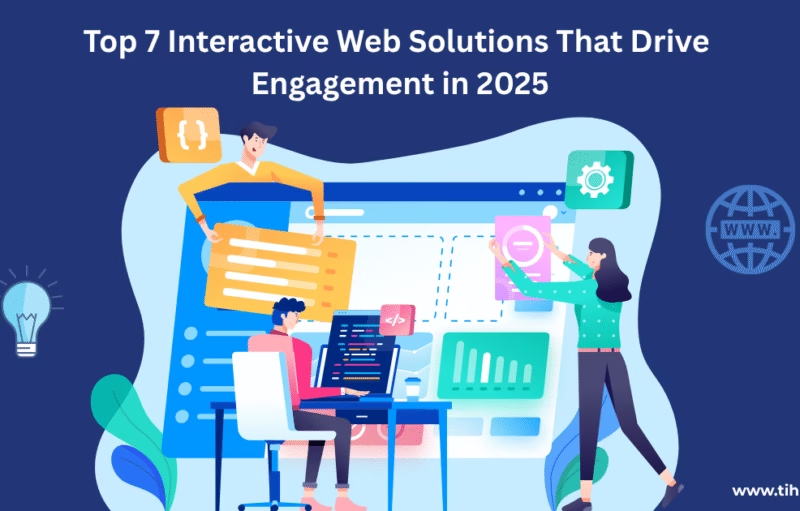The goal of any business is to generate a profit, but there will be no profit if no one knows about it. It’s all about enhancing your company’s visibility. As a busy business owner, you may find yourself in a time and cash pinch when it comes to marketing. As a result, you miss out on opportunities to expand your company. The visibility of a brand is crucial to its growth. Customers must be aware of your company in order to interact with you. Growing your company’s visibility is usually the key impetus behind marketing strategy, and depending on your objectives, this might involve a few distinct areas of concentration. Smart SEO services in Bangalore help you to maximize your visibility.
Having your internet presence is no longer a luxury, but rather a must. For various reasons, all brands, as well as those who work for them, maintain an online presence. It enables them to communicate directly with their target audience and engage them in discussions about their latest products and services. Some people regard online visibility to be a significant aspect in determining whether or not a brand is genuine. As a result, it is evident that having an online presence for every organization is critical nowadays. To do so, you’ll need to engage in holistic marketing and make use of a variety of content-sharing sites and social media platforms.
The good news is that increasing your company’s visibility does not require a lot of time or money. You only need to be smart and selective in your marketing efforts, and the good influence of these tiny efforts will quickly become apparent. Investing in little marketing initiatives can help you build long-term relationships with your clients and a loyal fan following for your products or services. A loyal client base will result in long-term sales and will help you enhance your company’s revenue in the future.
1. Consider Your Audience Persona
Although experiential marketing can be a great way to interact with your audience, it isn’t always the ideal plan. Before you get started, think about whom you’re attempting to contact, how you’ll reach them, and how you’ll get in touch with them. There is frequently a disconnect between what you believe your audience wants and what they actually desire.
2. Do Your Own Research
Although the notion of experiential marketing is not new, its applications are experiential marketing. If you’re going to spend considerable money on experiential marketing, make sure you understand how consumers want to engage with it. The goal is to provide enough information for customers to imagine themselves as part of your brand. Just a few examples include Facebook Live, Snapchat advertisements, 360, and dynamic content.
3. Make It worth Sharing
If you’re considering investing in experiential marketing, make sure you leave a lasting impression on your customers through engaging encounters and emotional connections. Improving your credibility and influence might provide you with a wonderful opportunity to demonstrate what makes your brand stand out. People will want to share your brand if you do this.
4. Put Your Customers First
The purpose of experiential marketing is to create brand evangelists, so the impacts extend far beyond the encounter. As a result, we must prioritize the audience while remaining focused on the brand. Staying on track could be easier if you have a straightforward brand statement that emphasizes your competitive advantage. Your audience should find the event memorable, newsworthy, and worth sharing.
5. Take Educated Risks
Don’t just go for it when it comes to experiential marketing. It’s easy to get enthused about new ideas and concepts, but make sure you consider the benefits and drawbacks. Test a small group of people and then assess their reactions. Experiential marketing should directly engage customers, but it should start with a true understanding of who they are so the experience doesn’t backfire and harm your brand.
6. Share Precious Moments
If you decide to invest in experiential marketing, make sure to publish user-generated content and videos from a brand-sponsored event on social media and your blog. People will be far more likely to attend the next event if your event is truly memorable. It also allows you to personalize your company and turn brand advocates into long-term brand ambassadors.
7. Don’t Wait To Make Meaningful Connections
Experiential marketing is gaining popularity, and more companies are investing in it. While you should not wait to get started, you should wait to launch until you have a clear goal in mind and the outcomes you want to attain. When brands build real connections and have a clear goal, experiential marketing is incredibly effective.
8. Make It Playful
We focus on making the experience as engaging and exciting as possible for the end-user as a digital agency that creates custom games to drive digital marketing for our customers. Make the incentives explicit, provide surprise bells and whistles that are gradually revealed, and give them the ability to connect with other people. Finally, the experience should be designed so that it sells itself.
9. Be Bold
The only purpose of experiential marketing is to leave a lasting impression. For brands, this means that the campaign’s concept takes precedence over everything else. To be successful, experiential marketing efforts must first thrill, shock, or amaze the target audience, and then equip them with the tools to share it with the rest of the world. Take risks and have a good time.
10. Extend the Audience’s Life
Experiential marketing can be fun and exciting, but it’s only useful if you have a small audience. No activation should be approved without a comprehensive digital lead-in strategy, a comprehensive strategy for owned content development and user-generated content, and a distribution strategy to ensure that millions of people get to experience the magic.
11. Design with Instagram in Mind
Even if you create an incredible experience, if there isn’t a place for people to take an Instagram photo, it won’t be shared online. Take a look at the Ice Cream Museum. Instagram was designed specifically for it, which is why it has grown so popular. Everyone snaps photos and Instagram Stories inside and shares them with their followers. You’ll have to wait months to get a ticket these days.
12. Use Your Event to Generate Content
When it comes to experiential marketing, there are a lot of moving pieces. Some of the most successful campaigns we’ve seen are those that squeeze every last drop of juice from the squeeze by developing promotional content ahead of time and leveraging the event as a content factory for post-event distribution. The importance of photos, videos, and user-generated material cannot be overstated. Although the event will only happen once, the material will last a lifetime.
13. Use Focus Groups to Evaluate Ideas
Experiential marketing may be a very effective technique to sell a product or service. When it comes to experiential marketing, one tip to remember is to come up with unique, out-of-the-box ideas and then run focus groups to see how people react to each one. To better forecast reactions, think about how your audience already engages with your brand and campaigns.
14. Make It Count
These days, the term “experiential” has a lot of clouts. Brands considering experiential marketing should think about all components of the campaign, including social activations and influencer marketing. Rather than paying for advertising, much of the money should be put towards the experience itself. Earned media will give the brand a larger payback if the experience and plan are well-executed.
15. Understand the Universe You Are Creating
The first step in building a brand experience for your audience is to understand your story and how it can be brought to life. Create a brand universe that fans may join, stay as long as they want, and leave whenever they want without feeling cheated. Include experiential marketing in your narrative. Fans will be able to continue up the plot from where they left off later.
It’s crucial to be seen locally on Google. Your potential clients won’t be able to locate your website if it doesn’t appear at the top of local search results, and you won’t be able to generate much traffic or income for your business. According to this study, 53% of consumers look for something local at least once a month.
Every small business in the area should try to improve its online visibility. Your local community can be a great asset as a direct purchase or referral source, whether you offer unique services, sell items, or manage a brick-and-mortar store. For your small business to be more visible locally online, local SEO is essential. Anyone can utilize these basic hyperlocal pointers.
All of your brand awareness initiatives should be focused on achieving particular objectives so you can track your progress. Continuously analyzing your strategies can help you determine which ones are effective and which ones you should abandon. Metrics for your business can be tracked in a variety of ways. For example, you can track your website traffic to see which content brings in the most visitors. You may also keep an eye on your social media accounts to see what motivates customers to interact with your brand. You may also check site activity to see what customers are looking for the most when they come to your website. Having such crucial insights will enable you to take a more tailored approach to business rather than a generic one, resulting in demonstrable benefits for your organization.
When we talk about workplace visibility on this site, we usually mean organizational visibility and transparency—the ability to see who is working on what, to observe and manage a team’s capacity and momentum, and to relate daily activities to the organization’s most critical goals. However, there is another aspect to workplace visibility that can be just as crucial to employee satisfaction and productivity. I’m referring to boosting your personal visibility. Increase your visibility, putting a soft spotlight on the fruits of your labor.
Some of us are naturally gifted at bragging about our achievements and forging significant ties with the organization’s decision-makers. Others of us are a touch too good at it, crossing the line into bravado and grandstanding, alienating our coworkers. Others, on the other hand, could need some assistance in earning the recognition and chances they deserve. I’ve put together these seven useful hints for this last group, which are especially vital when it’s time for your yearly performance evaluation. Similarly, increasing your exposure inside your business, industry, and professional network is an important aspect of developing a strong personal brand. So, how do you increase your professional visibility without constantly talking about yourself or sounding arrogant? After all, shameless self-promotion rarely results in long-term success.
Any company’s goal is to recruit new consumers and make a profit. But how can you be successful if no one knows your company exists? You may not have the time or budget as a business owner to hire a full-service marketing agency to assist you in growing your company. The good news is that increasing your company’s visibility does not require a lot of money or time. You will rapidly notice the good effects of your marketing efforts if you are smart and discriminating in your marketing activities. You may build long-lasting relationships with your clients and a dedicated following by engaging in minor efforts to market your brand. These connections are critical to your company’s success and survival. Professional services brands are distinct from consumer goods brands in that they are built around your knowledge rather than a commodity. You want your company’s brand to portray it as capable and trustworthy, as well as the finest in the business for the service you offer.
You may learn a lot about your target clientele by chatting to them and even asking potential clients who didn’t hire your organization. You’ll learn what services they require, what they seek when recruiting, deal breakers, why they chose a particular organization, and so on. This will aid in the refinement of your brand and the representation of the service quality and offerings that the market requires.














